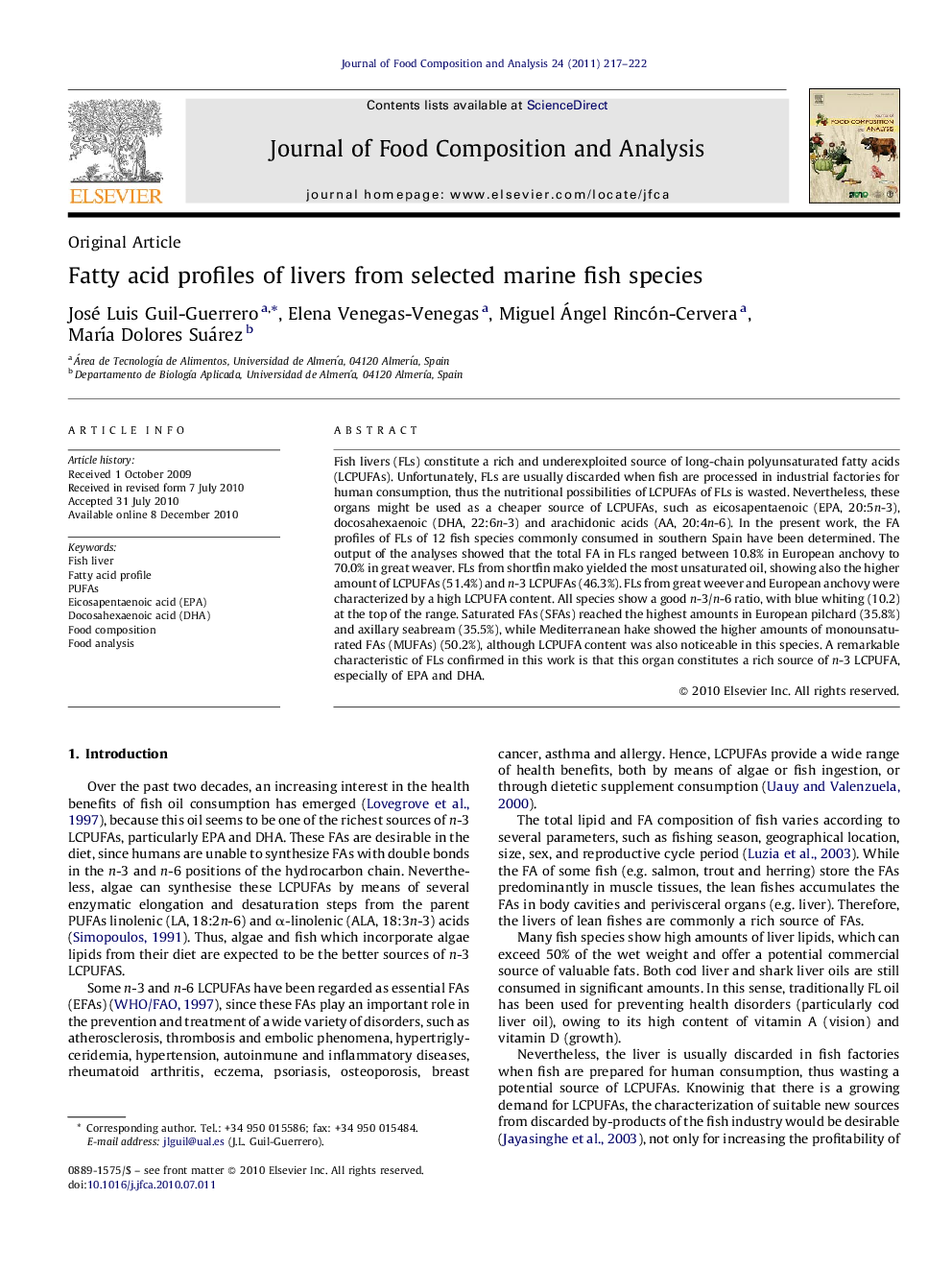| کد مقاله | کد نشریه | سال انتشار | مقاله انگلیسی | نسخه تمام متن |
|---|---|---|---|---|
| 1218795 | 967625 | 2011 | 6 صفحه PDF | دانلود رایگان |

Fish livers (FLs) constitute a rich and underexploited source of long-chain polyunsaturated fatty acids (LCPUFAs). Unfortunately, FLs are usually discarded when fish are processed in industrial factories for human consumption, thus the nutritional possibilities of LCPUFAs of FLs is wasted. Nevertheless, these organs might be used as a cheaper source of LCPUFAs, such as eicosapentaenoic (EPA, 20:5n-3), docosahexaenoic (DHA, 22:6n-3) and arachidonic acids (AA, 20:4n-6). In the present work, the FA profiles of FLs of 12 fish species commonly consumed in southern Spain have been determined. The output of the analyses showed that the total FA in FLs ranged between 10.8% in European anchovy to 70.0% in great weaver. FLs from shortfin mako yielded the most unsaturated oil, showing also the higher amount of LCPUFAs (51.4%) and n-3 LCPUFAs (46.3%). FLs from great weever and European anchovy were characterized by a high LCPUFA content. All species show a good n-3/n-6 ratio, with blue whiting (10.2) at the top of the range. Saturated FAs (SFAs) reached the highest amounts in European pilchard (35.8%) and axillary seabream (35.5%), while Mediterranean hake showed the higher amounts of monounsaturated FAs (MUFAs) (50.2%), although LCPUFA content was also noticeable in this species. A remarkable characteristic of FLs confirmed in this work is that this organ constitutes a rich source of n-3 LCPUFA, especially of EPA and DHA.
Journal: Journal of Food Composition and Analysis - Volume 24, Issue 2, March 2011, Pages 217–222